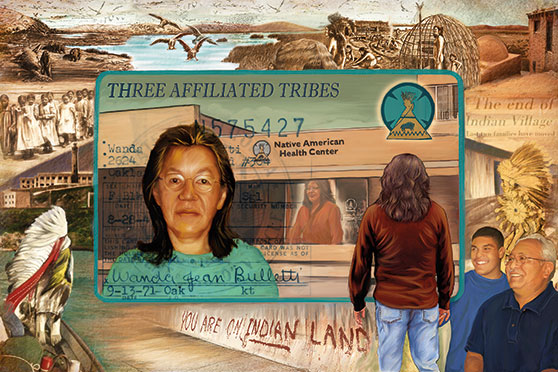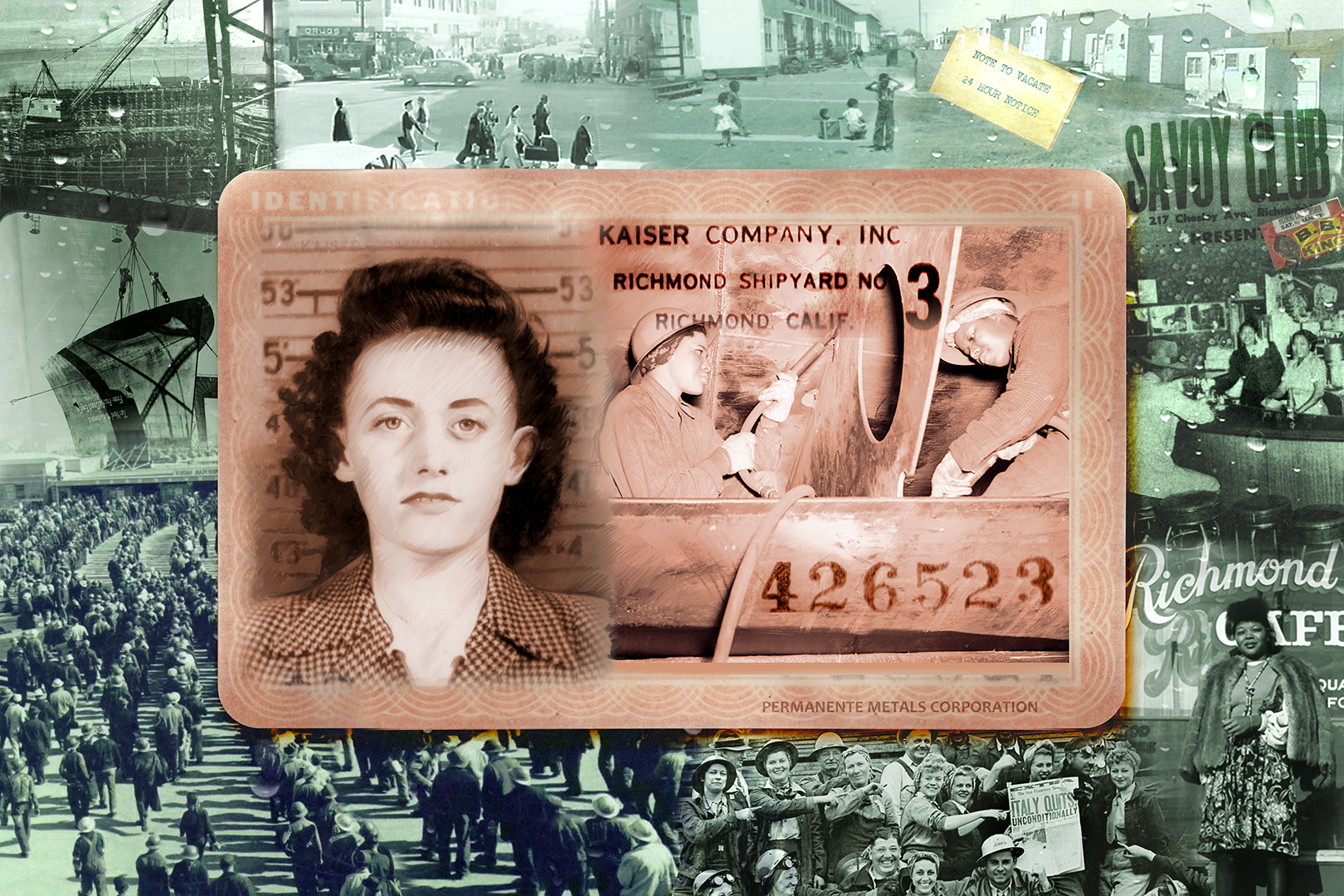The Richmond Mural Project: The Extraordinary Ordinary People
In this project we make use of the transformative experience of storytelling and coordinated forms of artistic expression to create a greater awareness of empathy, with the goal of fostering a deeper sense of connection and inclusivity among citizens of the East Bay, in Northern California. The purpose is to reduce our society’s empathy deficit by collecting and then sharing stories about the place of empathy in the lives of ordinary citizens – citizens whose backgrounds may be wildly diverse, but who share a common humanity and common citizenry.
The first panel displays the rich beginnings of the Ohlone people and the subsequent resettlement of Native Americans recruited to work in the war industry in the Richmond area. The mural depicts the land as it was, pristine and abundant with wildlife (as described in The Ohlone Way) and segues into the landscape where the Santa Fe Village is located. It transitions from the past into the future, moving from imagery of Native American traditions to the the arrival of the Spanish, through the Native American Boarding School Movement and the Native American Civil Rights movement, ending in the faces of their descendants.
The creation of railroads, oil, and food industries in Richmond mobilized the northern region of California’s economy and allowed for growth to take place in cities such as San Francisco, Monterey Bay and Richmond. Many manufacturers such as Pullman Co. were located in Richmond and pro- vided a wide range of jobs to the labor force. The elders of the community spoke of green houses and the Winehaven winery, the Canneries, and the fishing industry. They also remembered the many swamplands that crested the coastline, community farms, and the beginning of Standard Oil refineries.
The second panel depicts the movement of the Spanish era into the industrialization of the region, the impact that this industry had on the landscape and environment, and the first wave of immigration into the region. It features a young Mexican worker who was employed by Japanese-American owed nursery.
The WWII panel depicts the industrialization of Richmond and the importation of Native Americans, African Americans, and others from across the country to fill the labor needs. This influx caused vast tracts of cheap housing to spring up almost overnight, and pulled people from historically divided races and genders into the same workforce. This period in Richmond, with its financial utilization of war towards enterprise and its aggressive recruitment of labor, is echoed in the Bracero programs of the southwest. The population grew from 23,600 to over 93,700 in just three years. We have focused on an young woman from a Kaiser shipyards. The bordering imagery illustrates the population boom that occurred during the war and the temporary track housing typical of the era. The later effects of closing down these apartment buildings were devastating to the Richmond community. Families who had established themselves with the intention of staying were asked to leave overnight, their apartments already scheduled for demolition. This injustice and others suffered by the diverse ethnic populations of Richmond pulled people together and fueled the civil rights movements of the subsequent generation.
The South East Asian panel depicts a Laotian man who lived through the Vietnam War as a child soldier. His legs grazed the floor as he strode through the room with a radiant smile. He proudly carried a black vinyl folder in his arms that contained photographs from his life, including a hand drawn children’s book. As the interview began, we learned that Mr. Chanpha Keo was recruited at the age of 14 by the US-backed armed forces of Laos to crawl into underground tunnels to disarm mines and force out anyone in hiding. His worn hands turned the acetate sleeves of his vinyl folder as he told the story of his short childhood. He described the wet soil against his palms one morning as part of procedure for his explosives duty. A trek across a tall grassy knoll would scar his body and psyche for life. He only remembers a loud sound; when he came to, his friends were carrying him into the hospital. There he saw the spirit of his mother tugging at him and passed out. Mr. Keo awoke in a hospital having lost both legs due to a triggered mine.
Mr. Keo’s extraordinary love of humanity was staggering, as he had known intimately one of the worst facets of life. He told us how he left his country behind to find a better place for himself and his wife, the nurse who cared for him while he was hospitalized. He traveled across the continent until he arrived in the United States. Mr. Keo realized he could reclaim the tenderness and love taken from him during his childhood as an adult through occupations that served others. He attempted to become a nurse and a preschool teacher, but was told he didn’t qualify because of his handicap. After he was rejected he directed his full attention to caring for his children. The final pages of his vinyl book were filled with family photographs and a children’s book he wrote about his village and life in his native tongue. This segment of the mural includes many of the photographs and drawings given to us by Mr. Keo and the larger picture of the Laotian community in Richmond.
The current youth green movement takes us into the future of Richmond by imagining what is next for their extraordinary community. The innovative work of Doria Robinson and Urban Tilth inspire this segment. It centers around the creation of a new identity card for the environmental revolution at hand. The main image depicts a youth rally that extends beyond the identity card into the Richmond landscape.
Shirley Combs Jones stands at the upper right of the panel whose family popularized “O’ Happy Day”, the revitalization of the Richmond Greenway, images of environmental activism, current green industries, and the activation of youth from all across town. We will show Standard Oil’s refineries transform into solar plants and green industry. The image of Betty Reid Soskin serves as a reminder to future generations of the roots of Richmond, from Jim Crow Unions to the struggle for civil rights. Workshop participants spoke of how families used to take care of themselves by having communal farms and giant stews that were shared among the neighborhood; we will include these passages as well. The future of Richmond is envisioned as the full activation of the next generation in owning their own history and the care of their land.
The site of the new Richmond mural.

Richmond Videos
Betty Reid-Soskin Part 1 from SPARC Murals on Vimeo.




